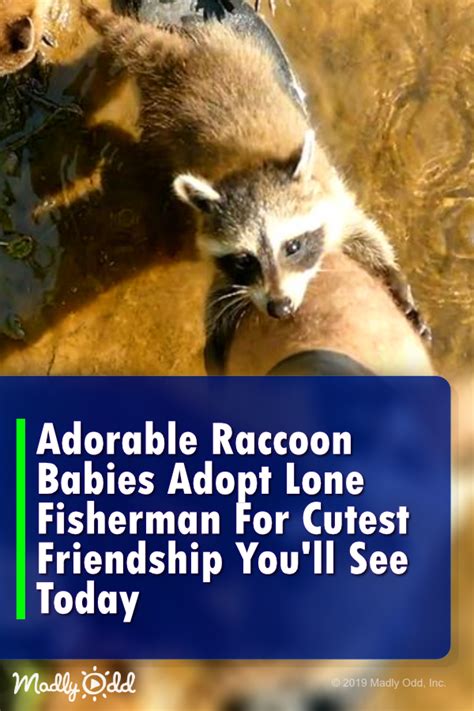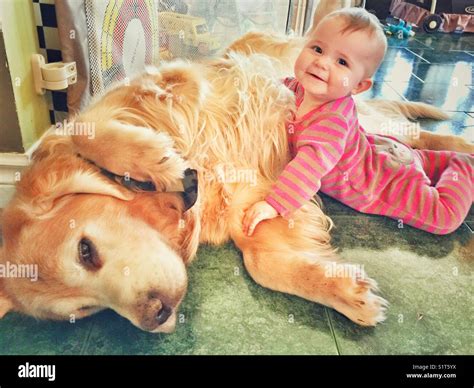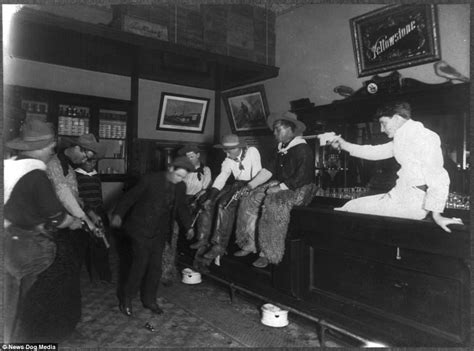
A German Shepherd in Brunswick, Ohio, has become an unlikely surrogate mother to a baby raccoon, providing warmth, companionship, and even allowing the orphaned animal to cuddle and play with her, according to owner Christina Eyerman.
Brunswick, OH – A heartwarming tale is unfolding in Brunswick, Ohio, where a German Shepherd has formed an extraordinary bond with an orphaned baby raccoon. The dog, affectionately known as “Dutch,” has taken on the role of a surrogate mother, providing comfort and companionship to the tiny creature.
Christina Eyerman, Dutch’s owner, discovered the abandoned raccoon, now named “Rocco,” alone and vulnerable. Recognizing the raccoon’s need for care, Eyerman initially intended to rehabilitate Rocco and eventually release him back into the wild. However, the situation took an unexpected turn when Dutch, displaying a remarkable maternal instinct, immediately bonded with the tiny raccoon.
“It was just really strange because she immediately took to him,” Eyerman said. “She started licking him and nudging him, and wanted to lay next to him.”
The bond between Dutch and Rocco has continued to strengthen in the days since their initial meeting. Dutch allows Rocco to cuddle with her, play around her, and even groom her fur. The pair spends hours together, exhibiting behaviors typically seen between a mother and her offspring.
Eyerman has been documenting the unique relationship on social media, where the story has quickly gone viral. People from around the world have been touched by the unlikely friendship, praising Dutch’s nurturing nature and the heartwarming connection between the two animals.
“It’s just amazing to watch,” Eyerman said. “They’re so different, but they just love each other.”
Eyerman is carefully monitoring the situation to ensure Rocco’s well-being. She supplements Dutch’s care with bottle feedings, providing the raccoon with the necessary nutrients for healthy growth. While she acknowledges the unusual nature of the situation, Eyerman emphasizes the importance of allowing Dutch and Rocco to continue their bond, as long as it remains beneficial for both animals.
The story of Dutch and Rocco serves as a reminder of the powerful bonds that can form between different species. It also highlights the capacity for compassion and empathy that exists within the animal kingdom. As Eyerman continues to share updates on their unlikely friendship, the world watches with anticipation, eager to see how this heartwarming tale unfolds.
Expanding on the Story
The tale of Dutch and Rocco is more than just a heartwarming anecdote; it touches upon several important aspects of animal behavior, conservation, and human-animal interaction. Examining these aspects provides a deeper understanding of the story’s significance.
Animal Behavior and Instinct:
Dutch’s behavior is a fascinating example of animal instinct and the complex emotions that animals are capable of experiencing. While German Shepherds are known for their intelligence and loyalty, the maternal instinct displayed towards Rocco transcends typical breed characteristics. Several factors could be contributing to Dutch’s behavior:
- Hormonal Influence: Female dogs, particularly those who have recently had puppies or experienced a false pregnancy, may exhibit heightened maternal instincts due to hormonal changes. Even without having recently given birth, the presence of a vulnerable creature can trigger these instincts.
- Pack Mentality: Dogs are pack animals, and they often form strong bonds with members of their social group, regardless of species. Dutch may perceive Rocco as part of her pack, prompting her to protect and nurture him.
- Individual Personality: Just like humans, animals have individual personalities. Dutch may simply be a particularly empathetic and nurturing dog, predisposed to caring for vulnerable creatures.
Raccoon Behavior and Adaptation:
Raccoons are highly adaptable and intelligent animals. Rocco’s willingness to accept Dutch as a surrogate mother demonstrates their capacity for learning and forming attachments. Several factors may contribute to Rocco’s acceptance of Dutch:
- Imprinting: Young animals often imprint on the first caregiver they encounter, regardless of species. Rocco, having been orphaned at a young age, may have imprinted on Dutch as a source of comfort and security.
- Survival Instinct: Raccoons are naturally resourceful and opportunistic. Rocco may recognize that Dutch provides him with warmth, protection, and access to food, increasing his chances of survival.
- Socialization: While raccoons are often solitary animals, they are capable of forming social bonds, particularly in captive or semi-captive environments. Rocco may view Dutch as a social companion, providing him with companionship and interaction.
Conservation and Rehabilitation:
The story of Dutch and Rocco also raises important questions about wildlife conservation and rehabilitation. While Dutch is providing invaluable care for Rocco, it is essential to consider the long-term implications for the raccoon’s well-being.
- Rehabilitation Goals: The primary goal of wildlife rehabilitation is to prepare animals for release back into their natural habitat. This involves minimizing human contact, providing species-appropriate care, and teaching essential survival skills.
- Humanization Concerns: Allowing Rocco to become overly attached to Dutch and humans could hinder his ability to adapt to life in the wild. It is crucial to ensure that Rocco retains his natural instincts and behaviors.
- Release Considerations: Determining when and where to release Rocco will require careful planning and consideration of factors such as his age, health, and ability to forage for food and avoid predators.
Ethical Considerations:
The situation also presents ethical considerations regarding the welfare of both animals:
- Dutch’s Well-being: While Dutch appears to be enjoying her role as a surrogate mother, it is essential to monitor her health and behavior to ensure that she is not experiencing any stress or discomfort.
- Rocco’s Independence: It is crucial to strike a balance between providing Rocco with care and allowing him to develop the skills and independence necessary for survival in the wild.
- Public Perception: The story has generated significant public interest, but it is important to avoid romanticizing the situation or promoting the idea of keeping wild animals as pets.
Responsible Pet Ownership and Wildlife Interaction:
Eyerman’s actions highlight the importance of responsible pet ownership and appropriate interaction with wildlife:
- Pet Responsibility: Providing a safe and nurturing environment for pets is essential. This includes ensuring that they are properly vaccinated, socialized, and supervised.
- Wildlife Awareness: Understanding the needs and behaviors of local wildlife is crucial for avoiding conflict and protecting their habitats.
- Professional Assistance: When encountering injured or orphaned wildlife, it is best to contact a licensed wildlife rehabilitator or animal control agency for assistance.
The Role of Social Media:
The story’s viral spread underscores the powerful role of social media in raising awareness about animal welfare and conservation issues.
- Positive Impact: Social media can be a valuable tool for sharing heartwarming stories, promoting responsible pet ownership, and educating the public about wildlife conservation.
- Potential Risks: It is important to be mindful of the potential risks associated with sharing information online, such as the spread of misinformation or the exploitation of animals for entertainment purposes.
- Responsible Sharing: Sharing accurate information, respecting animal privacy, and promoting ethical interactions with wildlife are essential for using social media responsibly.
Looking Ahead:
The future of Dutch and Rocco’s relationship remains uncertain. Eyerman will need to work closely with wildlife professionals to determine the best course of action for Rocco’s long-term well-being. The story serves as a reminder of the complex and often unpredictable nature of the animal kingdom. It also offers a message of hope, demonstrating the capacity for compassion and connection that exists between different species. By learning from this unique situation, we can gain a deeper understanding of animal behavior, conservation challenges, and the importance of responsible human-animal interaction.
In-Depth Analysis
The relationship between Dutch and Rocco, while captivating, necessitates a thorough examination beyond the initial heartwarming narrative. Several critical aspects deserve deeper exploration to fully understand the implications and ensure the well-being of both animals.
1. Nutritional Considerations:
While Dutch provides comfort and companionship, her milk is not formulated for raccoons. Raccoon milk has a different nutritional composition than canine milk. It generally contains higher levels of fat and protein, essential for the rapid growth and development of young raccoons.
- Supplementation: Eyerman’s decision to supplement Dutch’s care with bottle feedings is crucial. The formula must be specifically designed for baby raccoons or a suitable substitute recommended by a veterinarian or wildlife rehabilitator.
- Weaning Process: As Rocco grows, he will require solid food. Introducing age-appropriate foods, such as fruits, vegetables, and commercially prepared raccoon food, will be essential for his continued development.
- Veterinary Consultation: Regular check-ups with a veterinarian experienced in wildlife care are vital to monitor Rocco’s growth and identify any potential nutritional deficiencies.
2. Socialization and Behavioral Development:
Rocco’s interaction with Dutch is beneficial for his immediate comfort, but it could impact his long-term social and behavioral development. Raccoons typically learn essential survival skills from their mothers, including foraging, den building, and predator avoidance.
- Species-Specific Learning: Dutch cannot teach Rocco raccoon-specific behaviors. He needs exposure to other raccoons or raccoon surrogates to learn these crucial skills.
- Limited Communication: While Dutch and Rocco can form a bond, they communicate differently. Rocco may miss out on essential communication cues that he would learn from other raccoons.
- Behavioral Modification: As Rocco matures, he may exhibit behavioral issues due to his unusual upbringing. Working with a wildlife rehabilitator to address these issues will be crucial for his successful release.
3. Disease Transmission:
Close contact between different species always carries the risk of disease transmission. Both dogs and raccoons can carry diseases that are harmful to each other and to humans.
- Vaccinations and Parasite Control: Ensuring that Dutch is up-to-date on her vaccinations and parasite control is essential for protecting her and Rocco.
- Zoonotic Diseases: Raccoons can carry diseases such as rabies, raccoon roundworm, and leptospirosis, which can be transmitted to humans and other animals.
- Hygiene Practices: Practicing good hygiene, such as washing hands thoroughly after handling Dutch or Rocco, is crucial for preventing the spread of disease.
4. Reintroduction to the Wild:
The ultimate goal for Rocco, if possible, should be a successful reintroduction to the wild. This process requires careful planning and execution to maximize his chances of survival.
- Gradual Acclimation: Rocco will need to be gradually acclimated to the outdoor environment. This can be done by providing him with access to an outdoor enclosure that mimics his natural habitat.
- Predator Awareness: Teaching Rocco to recognize and avoid predators is crucial. This can be done through controlled exposure to simulated predators or by observing the behavior of wild raccoons.
- Soft Release: A “soft release” involves providing Rocco with food and shelter in a designated area while he gradually learns to forage and survive on his own. This allows him to adapt to his new environment with minimal stress.
- Monitoring: After release, it is important to monitor Rocco’s progress to ensure that he is adapting successfully. This can be done through tracking devices or by observing his behavior in the wild.
5. Legal Considerations:
Keeping a wild animal, even with good intentions, may be illegal depending on local and state regulations.
- Permits and Licenses: Many jurisdictions require permits or licenses to possess or rehabilitate wildlife. Eyerman should investigate the laws in Ohio to ensure she is in compliance.
- Wildlife Ownership: Even if a permit is obtained, ownership of a wild animal may be restricted. The ultimate goal should be to release Rocco back into the wild as soon as he is able to survive on his own.
6. The Emotional Impact on Dutch:
While Dutch appears to be content with her role as a surrogate mother, it is important to consider the potential emotional impact on her.
- Separation Anxiety: When Rocco is eventually released, Dutch may experience separation anxiety. Providing her with extra attention and affection can help her cope with the loss.
- Behavioral Changes: Dutch may exhibit behavioral changes, such as increased barking or restlessness, after Rocco is gone. Consulting with a veterinarian or animal behaviorist can help address these issues.
7. Long-Term Monitoring and Follow-Up:
Even after Rocco is released, it is important to continue monitoring his progress and provide follow-up care if needed.
- Post-Release Support: Providing Rocco with supplemental food during the initial weeks after release can help him adjust to his new environment.
- Veterinary Care: If Rocco becomes injured or ill, providing him with veterinary care is essential.
- Habitat Protection: Protecting Rocco’s natural habitat is crucial for his long-term survival.
Conclusion
The story of Dutch and Rocco is a testament to the power of interspecies bonds and the capacity for compassion in the animal kingdom. However, it is crucial to approach this situation with a balanced perspective, considering the potential challenges and ethical implications. By prioritizing the well-being of both animals and working with wildlife professionals, it may be possible to create a positive outcome for all involved. The key is to remember that Rocco is a wild animal and that his best chance for a fulfilling life lies in his ability to thrive in his natural environment. Therefore, a structured and professionally guided reintroduction process is essential.
Frequently Asked Questions (FAQ)
1. Is it normal for a dog to adopt a baby raccoon?
No, it is not typical. While dogs are capable of forming strong bonds with other animals, including those of different species, adopting a baby raccoon is unusual. Dutch’s maternal instincts, potentially influenced by hormones or her individual personality, likely played a significant role in her behavior. It’s essential to remember that this is an exceptional case, and it doesn’t mean all dogs will react the same way.
2. What are the potential risks of a dog and a raccoon living together?
There are several potential risks, including disease transmission (raccoons can carry rabies and other diseases), injury to either animal (especially the raccoon, given its size), and the raccoon’s potential for developing behavioral issues due to lack of species-specific socialization. Dutch’s milk isn’t suitable for a raccoon’s dietary needs.
3. What is Christina Eyerman doing to ensure Rocco’s well-being?
Eyerman is supplementing Dutch’s care with bottle feedings of raccoon-specific formula. She is also documenting the relationship and presumably consulting with veterinarians or wildlife rehabilitators, though the article doesn’t explicitly state this. It is crucial for her to continue monitoring Rocco’s health and development, and to seek professional guidance on his eventual release into the wild.
4. Can Rocco be released back into the wild after being raised by a dog?
It’s possible, but it requires careful planning and execution. Rocco will need to learn essential survival skills, such as foraging and predator avoidance. He may also need to be gradually acclimated to the outdoor environment. Wildlife rehabilitators are best equipped to handle this process, ensuring Rocco has the best chance of adapting to life in the wild. The longer he remains with Dutch, the more challenging reintroduction becomes.
5. Is it legal to keep a raccoon as a pet?
The legality of keeping a raccoon as a pet varies by state and local jurisdiction. In many areas, it is illegal or requires a permit. It is crucial to check local laws and regulations before attempting to keep a wild animal. It’s generally discouraged because raccoons have specific needs that are difficult to meet in a domestic setting, and they can pose a risk to public health and safety.









